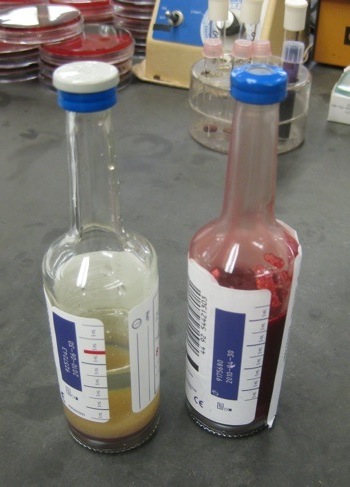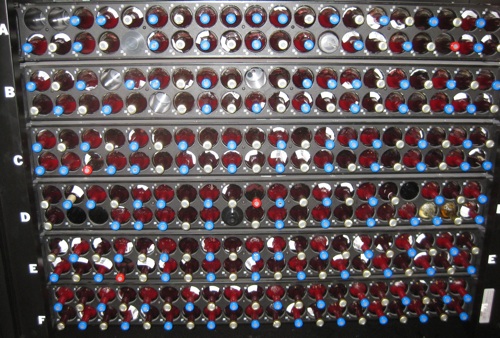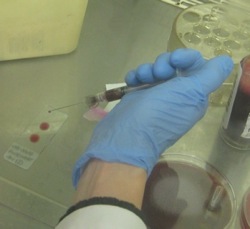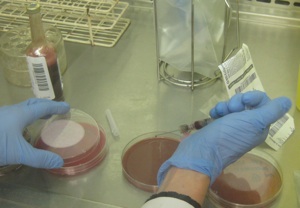
Blood Cultures
last authored: Feb 2010, David LaPierre
last reviewed:
Introduction
Blood cultures are done if there is suspicion of bacteremia or sepsis, suggested by fever or other signs and symptoms.
Causes of bacteremia or sepsis include bacterial pneumonia, pyelonephritis, endocarditis, or intra-abdominal infections.
|
|
Procedures
- collection
- incubation
- processing
Collection
A blood culture consists of venipuncture or other blood sampling, followed by the innoculation of culture vials. Aerobic and anaerobic vials are typically drawn together as a set. Other tubes include those for mycobacteria and for pediatrics.

Given the risk of contamination from skin flora, two sets must be taken, each from a different location. Sets may also be separated by time, for improved specificity.
For optimal detection, do blood cultures from three different sites. This can lead to a positive recovery in greater than 95% of cases.
Blood cultures can have a high false positive rate, requiring meticulous collection technique. A solution of 70% alcohol and 0.5% chlorhexidine is used to prepare the venipuncture site. Pay careful attention to ensure asepsis, wearing sterile gloves and a mask.
Blood culture tubes contain rich nutrients that faciliatate of all known pathogens that can cause bacteremia.
A minimum of 5 ml, and a maximum of 10 ml, should be drawn per bottle. Specimens for the anaerobic bottle, if used, should be drawn first in order to prevent the influx of air.
Perform phlebotomy according to standard procedure. Samples may be drawn in two ways:
syringe method: draw 5-10 ml of blood into a sterile syringe using a butterfly needle. Discard needle and use sterile adaptor to transfer proper amount to blood culture bottles.
|
adaptor method: mark bottle fluid level. Perform phlebotomy using butterfly needle and adaptor directly into culture bottle.
|
Label specimens and requisitions and transport to lab for incubation.
Incubation

blood culture incubator
In the lab, adequate volumes are confirmed and samples are entered into the records system.
Cultures are incubated at 35 degrees C, and samples are regularly and automatically assessed for CO2 production. This is measured via fluorescent activity of culture medium components.
If a threshold is reached, samples are removed for further processing (see next section).
Samples are cultured for five days for bacteria, and for ten days for fungi, before they can be declared negative.
Processing
Positive cultures are typically evaluated in the following ways:

preparing blood culture gram stain
1. gram stain for initial identification (see left)
2. plating on blood agar, chocolate, and BH plates; McKonkey plates added if gram negative rods seen on gram stain (see below)
3. antimicrobial susceptibility testing to guide treatment. Emperic antibiotics will likely have already begun.

preparing blood culture plate
